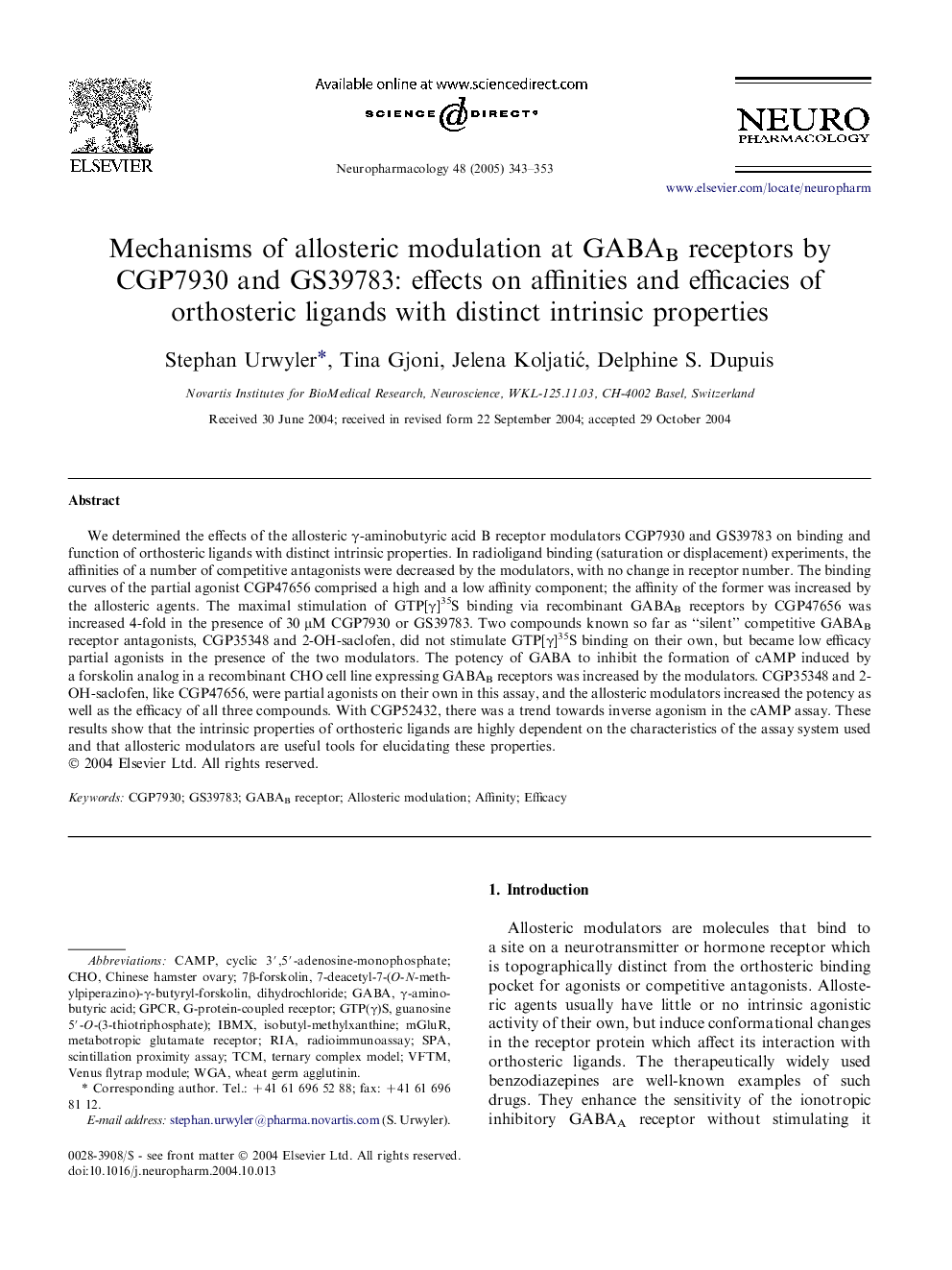| Article ID | Journal | Published Year | Pages | File Type |
|---|---|---|---|---|
| 8998242 | Neuropharmacology | 2005 | 11 Pages |
Abstract
We determined the effects of the allosteric γ-aminobutyric acid B receptor modulators CGP7930 and GS39783 on binding and function of orthosteric ligands with distinct intrinsic properties. In radioligand binding (saturation or displacement) experiments, the affinities of a number of competitive antagonists were decreased by the modulators, with no change in receptor number. The binding curves of the partial agonist CGP47656 comprised a high and a low affinity component; the affinity of the former was increased by the allosteric agents. The maximal stimulation of GTP[γ]35S binding via recombinant GABAB receptors by CGP47656 was increased 4-fold in the presence of 30 μM CGP7930 or GS39783. Two compounds known so far as “silent” competitive GABAB receptor antagonists, CGP35348 and 2-OH-saclofen, did not stimulate GTP[γ]35S binding on their own, but became low efficacy partial agonists in the presence of the two modulators. The potency of GABA to inhibit the formation of cAMP induced by a forskolin analog in a recombinant CHO cell line expressing GABAB receptors was increased by the modulators. CGP35348 and 2-OH-saclofen, like CGP47656, were partial agonists on their own in this assay, and the allosteric modulators increased the potency as well as the efficacy of all three compounds. With CGP52432, there was a trend towards inverse agonism in the cAMP assay. These results show that the intrinsic properties of orthosteric ligands are highly dependent on the characteristics of the assay system used and that allosteric modulators are useful tools for elucidating these properties.
Keywords
IBMXVenus Flytrap moduleCGP7930GS39783WGATCMSPAmGluRGPCRRIAcAMPG-protein-coupled receptorguanosine 5′-O-(3-thiotriphosphate)Efficacyγ-aminobutyric acidisobutyl-methylxanthineChoChinese Hamster OvaryScintillation proximity assayradioimmunoassayternary complex modelAllosteric modulationAffinityGABAWheat germ agglutininGABAB receptorMetabotropic glutamate receptor
Related Topics
Life Sciences
Neuroscience
Behavioral Neuroscience
Authors
Stephan Urwyler, Tina Gjoni, Jelena KoljatiÄ, Delphine S. Dupuis,
